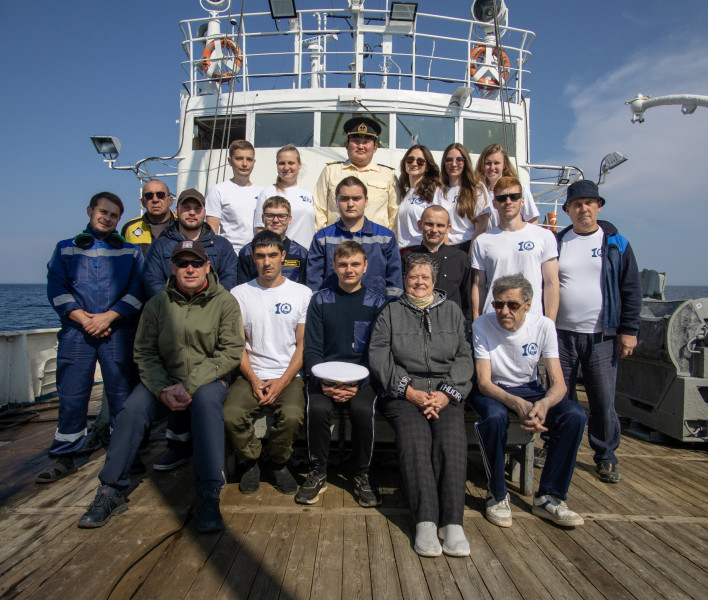VIII scientific student expedition Class@Baikal-2024 on board the R/V “G.Yu. Vereshchagin” (June 18 - July 6, 2024).
From June 18 to July 6, 2024, with the decisive support of LIN SB RAS, the VIII scientific student expedition of the international project Class@Baikal, which is part of the “Training-through-Research” (Floating University) program, took place on Lake Baikal (http://class-baikal.ru). Nine participants from Lomonosov Moscow State University, St. Petersburg State University, and Limnological Institute SB RAS took part in the expedition, including six students and young scientists.
The purpose of the expedition was to conduct complex geological, geochemical, hydrogeological and engineering-geological studies of various objects and manifestations of geological processes on the bottom of the southern and central basins of Lake Baikal.
During the expedition, 72 bottom sampling stations were operated with a gravity tube, and undisturbed bottom sediment cores up to 5 meters long were obtained. The selected core was described in detail, photographed, sampled, expressly analyzed on board, and preserved for shipment to the Moscow State University and LIN SB RAS laboratories.
During the expedition a large collection of hill sediments from the mud volcanoes of the Akademicheskiy Ridge, K-4, Katko, Khoboy and Novosibirsk were selected for detailed lithological study and typification. The Kukuysky, Sredny, Kharauz, and Posolsky canyons were sampled to determine the features of fluid discharge along the canyons and to characterize erosion and accumulation activity in these areas. In the area of the Academic Ridge, cores were sampled at 7 stations for detailed analysis of sediments in order to search for signs of modern and/or palaeo-activity of near-bottom currents.
For the first time, large (apparent to the naked eye) gas hydrates were raised on the MSU structure discovered during the Class@Bakal-2018 expedition, thus finally confirming its hydrate-bearing capacity. To compare the characteristics of liquid hydrocarbon compounds discharged in different parts of Baikal, oil was sampled in the Gorevoy Utyos and Zelensip areas. The oil data will be analyzed by chromatography-mass spectrometry in the MSU laboratory.
The Class@Baikal project, initiated in 2014 by the Department of Geology of Lomonosov Moscow State University and developed with the active support of LIN SB RAS, is now in its tenth year of research at Lake Baikal. Thanks to the experience gained, the project continues to develop and reach a new level. Much has changed over the years, but what has not changed is the inexhaustible optimism, spirit of research and high aspirations of the Baikal Floating University, as well as the uniquely high level of cooperation between the university and the Academy of Sciences!
















